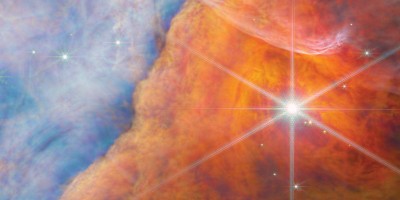Carbon atoms are one of the most abundant chemical species in the earliest stages of star formation. They had been thought to be immobile on the surface of interstellar ice, but laboratory experiments now show that a significant fraction of carbon atoms can move on the surface and react — changing our view of interstellar organic chemistry.

References
Cuppen, H. M. et al. Grain surface models and data for astrochemistry. Space Sci. Rev. 212, 1–58 (2017). A comprehensive review highlighting the different physical and chemical processes operating on interstellar dust grains.
Molpeceres, G. et al. Carbon atom reactivity with amorphous solid water: H2O-catalyzed formation of H2CO. J. Phys. Chem. Lett. 12, 10854–10860 (2021). This paper provides an explanation for the behaviour of carbon atoms on interstellar ice from a combined theoretical and experimental perspective.
Tsuge, M. & Watanabe, N. Behavior of hydroxyl radicals on water ice at low temperatures. Acc. Chem. Res. 54, 471–480 (2021). A review article that presents the PSD-REMPI method for detection of radicals on ice and its application to OH radicals.
Qasim, D. et al. An experimental study of the surface formation of methane in interstellar molecular clouds. Nat. Astron. 4, 781–785 (2020). This paper looks at the behaviour of carbon atoms at extremely low temperatures and in the presence of H atoms.
Miyazaki, A., Tsuge, M., Hidaka, H., Nakai, Y. & Watanabe, N. Direct determination of the activation energy for diffusion of OH radicals on water ice. Astrophys. J. Lett. 940, L2 (2022). This paper reports a methodology for determining the Esd of radicals on ice.
Additional information
Publisher’s note Springer Nature remains neutral with regard to jurisdictional claims in published maps and institutional affiliations.
This is a summary of: Tsuge, M. et al. Surface diffusion of carbon atoms as a driver of interstellar organic chemistry. Nat. Astron. https://doi.org/10.1038/s41550-023-02071-0 (2023).
Rights and permissions
About this article
Cite this article
Carbon atoms can diffuse and react on the surface of interstellar ice. Nat Astron 7, 1280–1281 (2023). https://doi.org/10.1038/s41550-023-02074-x
Published:
Issue Date:
DOI: https://doi.org/10.1038/s41550-023-02074-x
- Springer Nature Limited


